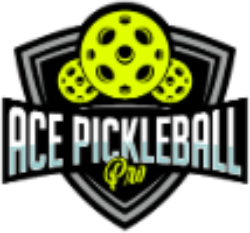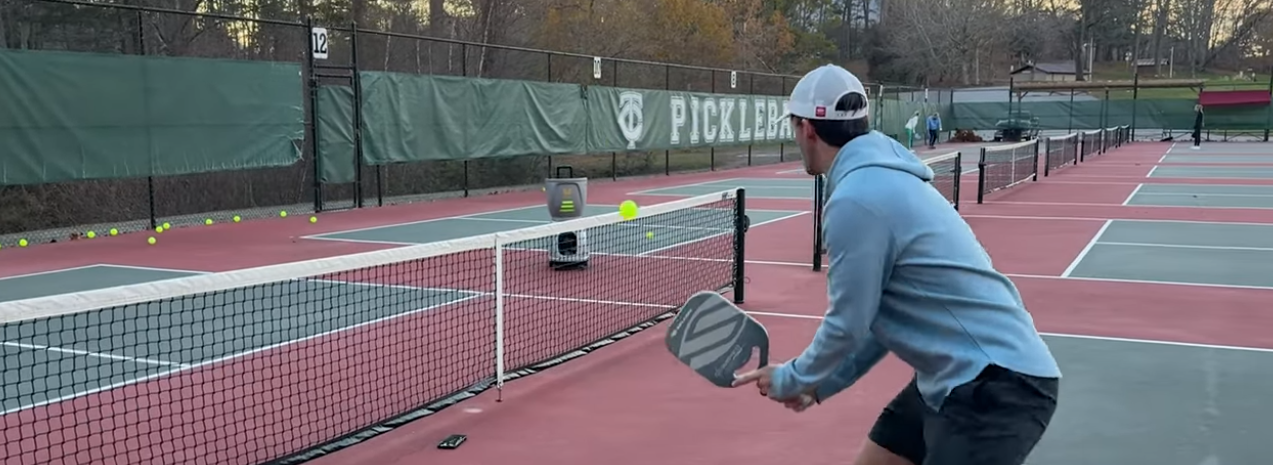It was the third game. Match point. My opponent didn’t just return my shot—he anticipated it like he’d seen it before. I blinked. Froze. That’s when it hit me… I wasn’t playing the game. I was repeating patterns. He was reading me like a book I didn’t know I was writing.
In the next decade, the true potential of pickleball machines won’t lie in how well they hit balls—it will lie in how well they simulate the human condition under pressure.
Today’s machines serve as programmable feeders, even AI-assisted sparring partners. But what if they became behavioral mirrors, replicating decision-making patterns, fatigue states, and psychological tells of real human players?
This is the direction advanced sports tech is heading—and pickleball, with its compact court and lightning tempo, is a prime candidate for simulation evolution.
The AI-Driven Training Spiral: Mechanics → Decision Loops → Mental Mirrors
Forget repetition. The future of training is strategic emergence. Think of a training spiral: you start with mechanics, loop through patterns, and end up staring at your mental mirror. That’s where performance truly gets cracked open.
Pro Tip: Want your reaction time to feel superhuman? Try chaotic drills—loud music, flashing lights, unpredictable rhythm.
→ What is a pickleball ball machine and how does it work?
Cross-Disciplinary Futures: Where AI Pickleball Training Might Be Headed
1. Cognitive Load Simulation (Borrowed from Fighter Pilot Training)
Elite fighter pilots don’t just train for shots—they train under chaos: multiple threats, disorientation, fatigue. What if your machine could:
- Randomly shift shot rhythm, spin, and trajectory based on heart rate?
- Inject false cues to test anticipation?
- Force decision-making under artificial stress?
Pro Tip: You’re more likely to lose your topspin after your legs give out. Monitor your footwork and grip under fatigue.
→ Best pickleball paddles for spin
2. Neuroscience Feedback Loops
EEG sensors. Focus-detecting wearables. Imagine a machine that adapts its intensity based on your mental state:
- Confidence low? It eases off.
- Focus high? It pushes harder.
- Eye-tracking helps sharpen your anticipation window.
Pro Tip: Not all machines are built alike. Some players need rhythm. Others need randomness.
→ Best pickleball machines ranked by player style
3. Digital Doppelgängers (The “Opponent Genome” Concept)
Imagine uploading match data from your biggest rival into your training machine. Shot selection. Court positioning. Serve patterns. You train against their ghost.
This isn’t sci-fi—it’s the same tech Formula 1 drivers use to train against old laps.
Visual Metaphor: The Rival Decoder Grid—a spider chart visualizing pressure response, shot bias, recovery lag, and tempo shifts.
Pro Tip: Your paddle isn’t just a tool—it’s your personality. Choose wrong, and you train against your own instincts.
→ Pick the best paddle for your game
Reversing the Paradigm: Can the Machine Learn from You?
Most machines train your weaknesses. But what if:
- It identified your third-shot predictability?
- It suggested in-game strategic pivots?
- It adapted to your decision loops in real-time?
This isn’t just reflex training—it’s strategic evolution.
Pro Tip: Ever feel the ball slipping at contact? Check your grip pressure. Too tight kills control.
→ How to hold a pickleball paddle
What AI Can Simulate (and What It Can’t… Yet)
| Element | Current Capability | Emerging Frontier |
|---|---|---|
| Shot Mechanics | ✅ Fully adaptable | Fatigue-responsive feedback |
| Shot Patterns | ✅ Drill-based | Opponent mimicry via video AI |
| Psychological Pressure | ⚠️ Minimal | Mental-state reactive machines |
| Game Flow Rhythm | ✅ Set drills | AI tempo shifts |
| Strategic Manipulation | ❌ Not yet | Counter-strategy suggestions |
| Decision Fatigue | ⚠️ Manual rest cycles | AI “fatigue emulation” drills |
Pro Tip: Accuracy’s great. But try training for anticipation—have your machine simulate your opponent’s patterns.
→ Practicing against a wall is still underrated for this.
Future Concepts: Wild but Plausible
| Concept | Description |
|---|---|
| Augmented Reality Drills | Overlay past match footage during live feed ball drills. |
| Personality-Aware Machines | Adapts challenge curve to boost player grit or restore confidence. |
| Scent + Sound Simulation | Replicate real-match stress with crowd noise, squeaks, and even sweat-scented realism. |
| Social Learning Networks | Load up community drills based on top tournament patterns. |
| Holographic Partners | Combine machine feed with hologram rivals to train real motion reaction time. |
Visual Metaphor: The Pickleball Mind-Tech Matrix — imagine a map where biofeedback, AI, and AR converge around your serve stance.
Pro Tip: Serve isn’t just power—it’s recon. Use it to read opponent body language fast.
→ How to practice pickleball serves
Redefining the Role of the Coach
In this AI-powered future, your coach becomes less a drill sergeant and more of a strategist-therapist.
- Coach = Game Psychologist
- Machine = Diagnostic Lab
- You = Data-Driven Competitor
You don’t just train harder—you train wiser. And the coaches who can interpret performance patterns will be more valuable than ever.
Pro Tip: Don’t ignore paddle fatigue—lighter or more balanced options can keep your hands quick in long rallies.
→ 13mm vs 16mm paddle guide
Why This Matters: The Competitive Edge
At elite levels, matches aren’t won by raw skill alone. They’re won by:
- Pattern recognition
- Emotional regulation
- Split-second strategic shifts
Pickleball machines that simulate styles aren’t just feeding shots—they’re feeding adaptation. That’s the future.
Pro Tip: Still wondering if these machines are worth it?
→ Do pickleball machines help?
Final Thought: From Repetition to Emergence
The real question isn’t whether machines can simulate different player styles.
It’s whether they can teach you to transcend style—to become the kind of player who adapts, intuits, and anticipates under dynamic, evolving conditions.
Because at the edge of training and tech is this truth: you’re not just training to play the game. You’re training to outthink it.
At Ace Pickleball Pro, we believe the mind is the ultimate paddle. Let’s train like it.
Frequently Asked Questions:
1. Can a pickleball machine really simulate a human opponent?
Not in the “trash-talking rival with a smug backhand” sense… yet. But advanced models can mimic shot variety, spin, tempo changes, and even semi-random sequences that feel like you’re playing against a real person. Some machines are already integrating adaptive AI, letting drills respond to your performance patterns in real-time.
Curious about top options? Here’s our breakdown of the best pickleball machines.
2. How close are we to AI-driven pickleball training?
We’re already on the court. Some ball machines now include programmable drills, fatigue emulation, and even connectivity with wearables. The future? Machines that track emotional state, recognize your tells, and feed you unpredictable pressure.
Wondering how they work behind the scenes? Read: What is a pickleball ball machine and how does it work?
3. What’s the benefit of training against simulated styles?
Training against a machine that mimics a rival’s tendencies or unpredictable gameplay builds your anticipation, resilience, and decision agility. You’re not just drilling technique—you’re building real match intelligence. It’s the difference between playing at someone and playing through their strategy.
4. Can a pickleball machine help me prepare for a tournament?
Big yes. Especially if you’re able to customize drills based on past opponent footage or match tendencies. Some players train with “ghost” patterns from rivals—like ghost laps in racing. It’s not just ball feed—it’s opponent mapping.
5. Do pro pickleball players use ball machines?
Absolutely. Machines like the Spinshot and Lobster Pickle Two have earned spots in elite training routines. They’re used for repetition, recovery drills, and now—AI-enhanced decision training.
Need proof? Check out our pro-approved pickleball machine reviews.
6. Are all machines able to simulate different player styles?
Nope. Most machines on the market today are programmable feeders. Only a few edge toward style simulation. Look for features like randomization, variable spin, speed controls, and integration with video or biometric tech.
7. What’s the difference between ball control and player simulation?
Ball control = the ability to feed you consistent, programmable shots.
Player simulation = unpredictable sequences, decision-tree-based logic, stress-triggered feeds, and gameplay pattern mimicry.
Think: repetition vs. replication. Both are useful—but only one makes you unpredictable.

